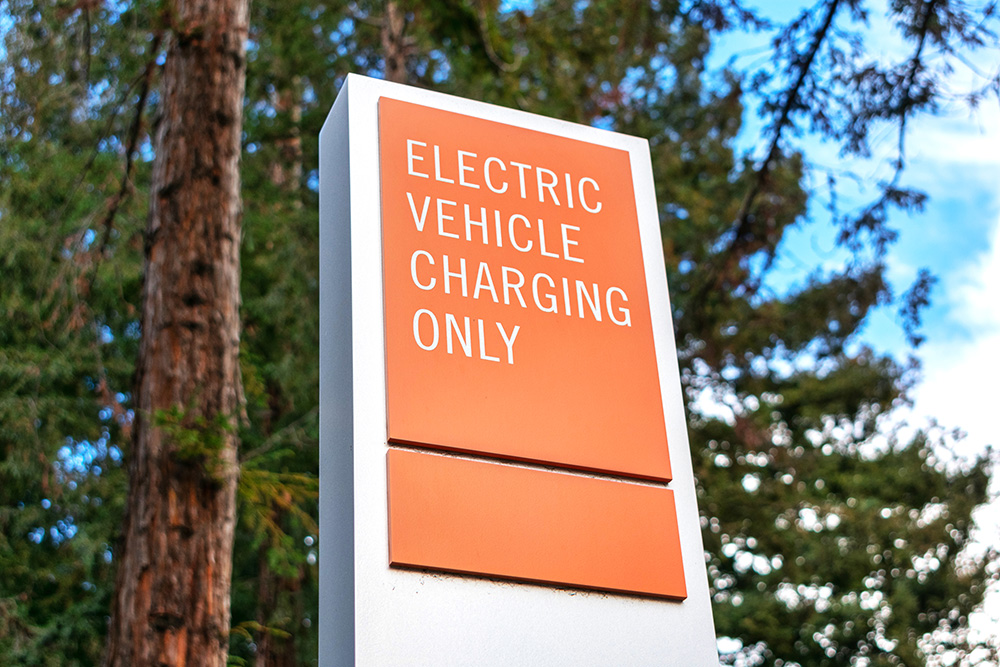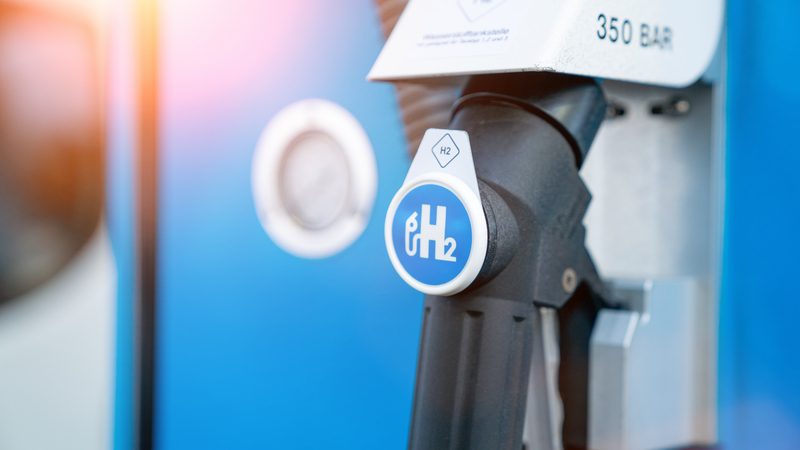
For the past decade, the transportation field has been eagerly anticipating the arrival of a new electric vehicle (EV) fleet. Traditional carmakers and tech giants have capitalised on the excitement. Despite the hype, EV adoption has not been particularly fast or widespread. In June 2021, a Pew Research study found that after years of federal tax credits and billions in subsidies to manufacturers, only about 7% of the US fleet and 2% of new car sales are hybrid or electric.
The hype continues to build, with governments shelling out for millions of charging stations. The much-anticipated federal infrastructure bill, even as a dwindling fraction of its original form, includes $7.5 billion for a nationwide charging network. Mainstream headlines and industry experts talk about serving the EV fleet as if it’s already here instead of making up less than 10% of vehicles on the road.
Many experts argue that widespread adoption is impossible until the US is flooded with charging stations and infrastructure to accommodate EVs. The reality is that even sales of hybrid vehicles, which do not require extensive infrastructure, have declined rapidly.
Higher emissions
If demand is trending downwards, then it’s clear the goal is to increase supply and use aggressive marketing to induce demand. A great deal of thought is being given to the strategies and logistics of conversion to an electric fleet. One question seems to go largely ignored: should we be pushing for an electric fleet at all?
The primary argument for a ‘great switch’ to EVs is the environmental one. In the face of a 50-year-old climate crisis that can no longer be ignored or pushed down the road, EV adoption sounds like an easy win for governments who want to reduce emissions without fundamentally changing anything.
Unfortunately, there is a growing body of evidence that EVs are not the clean, green machines they are made out to be. Any comparison between EVs and combustion engines is necessarily complex since each make and model can vary widely in materials and efficiency.
It’s clear that EVs come with a significantly higher emissions cost during manufacturing, and that making up this deficit takes several years of driving.

Emissions are relatively easy to measure and compare and are given political weight as one of the primary metrics of the Paris Climate Accords, but they are not the only metric of environmental impact. Electric cars require minerals for their batteries such as cobalt and lithium, and the mining of these materials comes with environmental problems which are difficult to track.
Lithium mines require an enormous amount of groundwater, which is often permanently contaminated in the process. Millions of cubic yards of toxic or even radioactive waste are generated and left on-site. The earthmoving required for open-pit mines far surpasses that of coal and is expected to eliminate entire local ecosystems.
Cobalt comes with a similar set of environmental issues: crop fields and rivers have become rapidly contaminated as demand increases. Like lithium, cobalt is transported by trucks running on combustion engines. The minerals are typically mined in South America or Africa and brought to factories in Europe or North America, a lengthy supply chain with its own list of impacts and inefficiencies.
Determining the sustainability of an EV fleet means examining social cost as well as environmental. Unfortunately, the human impact of lithium and cobalt mining may be even worse. Human rights groups have reported violations in these industries for years, especially in the poor nations where these minerals are extracted.
Ecosystem devastation
A Nature article found in 2020 that demand for lithium and cobalt will increase by as much as 40 times for only 50% electric vehicle adoption.
It is questionable whether the Earth even contains enough material to replace every existing combustion vehicle with an electric engine. There is no question at all that the impact of doing so would be devastating to ecosystems and communities around the world.
The idea that electric cars come with a carbon deficit is fairly well known, but few evaluations consider the true impact of having EVs on the road. Electric cars are incredibly heavy, coming in at two or three times the weight of their gasoline counterparts.
Heavier vehicles crush pavement faster and vibrate bridges more violently. Doubling or tripling the weight of the entire US vehicle fleet will inflict untold damage on already-aging infrastructure. The concrete and asphalt needed to replace these facilities could easily dwarf the perceived benefit of reduced individual emissions.
The greenhouse gas (GHG) emissions related to production of concrete make it one of the most emissions-intensive materials, topped only by coal, oil, and natural gas. Asphalt is derived from fossil fuel by-products and has recently been linked to significant GHG emissions during application. If road infrastructure needs to be replaced twice as often, the GHG cost of these materials alone could offset the emissions savings of an electric fleet.
Even as maintenance needs become more frequent and costly, design standards will have to be increased to account for the additional load on bridges. This will make new construction more expensive and require more materials across the board.
Apart from environmental concerns, average vehicle weight comes with an increasing price in human lives. This problem began decades ago as the popularity of SUVs put more and more people in larger, heavier personal cars. A recent study found that SUVs are more likely to kill pedestrians in 7% of accidents under 40mph and 46% of accidents over 40mph. Another found that in the last two decades, over 1,100 pedestrians were killed by SUVs who would have likely survived if struck by a car under the same circumstances.
These excess deaths are understood to be related to the size, weight, and design of the vehicles involved. The average weight of vehicles in the US has increased by over 400lbs since 2000. Heavier vehicles transfer more momentum during impact and are correspondingly deadlier, even at low speeds. In order to keep occupants safe in collisions, engineers are forced to make cars larger to include extra collapsible space. Pedestrians are more difficult to spot from larger vehicles and the high center of gravity places impact points at the chest rather than the legs, both of which contribute to even more deaths.
Added weight
While studies and reports generally link these issues to SUVs, many of the same problems are inherent to weight and therefore applicable to EVs of all types. Since these vehicles are both safer for occupants and deadlier for outsiders, road users are pushed to buy their own larger vehicles to feel safer. The arms race pushes bloated, heavier cars out of the pedestrian scale of design and makes urban environments more hostile to non-car modes of transportation.
The added weight of EVs poses economic threats in addition to social and environmental concerns. Doubling the weight of light-duty vehicles promises to pile onto the already staggering road and bridge maintenance backlog in the US, estimated at almost $800 billion by the American Society of Civil Engineers’ report card.
Even worse, EVs threaten an extraordinary administrative burden. Transportation infrastructure has been largely funded by gas taxes for the past century. Decades of refusal to index the tax to inflation has left these funds with less than half of their original spending power as the highway system continues to grow. Increased fuel efficiency has already been noted as a serious impact to available funds. Now chronically underfunded DoTs must consider the prospect of an EV fleet that costs more to support but pays no gas tax at all.
Facing dwindling revenue and growing costs, the transportation industry has sought alternative funding sources. New York City is planning to pilot citywide congestion pricing. Several urban areas have introduced Mobility as a Service models. The infrastructure bill includes funding and recommendations for a national mileage-based user fee pilot programme as well as continued support for state and local versions.
These funding proposals and more have their strengths and weaknesses, but none are as simple and clean as the gas tax. High implementation costs and complex logistical challenges plague any attempt to accommodate electric cars in an equitable user-based revenue stream.
Common denominator
In the face of these widely varied problems with no clear solutions, it becomes important to examine the common denominator: electric cars are still cars. For the past century, society has been reorganised around the idea that everyone should own and operate their own personal vehicle.
Though car dependency had begun to spread in the early 1900s, the beginning of the interstate highway system in the 1950s truly enabled the spiraling excesses of autocentric design most people experience today.

By the 1970s, induced demand was in full swing. Transit and pedestrians were removed from streets to allow smoother traffic flow from far-flung subdivisions. Wide swathes of nearly every urban area in America were bulldozed for lane after lane of free-flow highway. Housing and land use policy was completely reconstructed to ensure that no area reached a density that would produce congestion, yet congestion always seemed to appear.
Fifty years of paving later, US cities are more congested than ever.
Driving is a necessity rather than a choice for the vast majority of Americans. Car ownership is a huge economic burden as people wrap up most of their net worth in a rapidly depreciating asset. The social isolation of autocentric life manifests as a contributing factor in rampant depression and anxiety.
Worse than the individual effects are the collective externalities. Low-density suburban sprawl often cannot produce the property taxes necessary to maintain city services, so higher-density urban residents must subsidise them. Sprawl is one of the leading causes of species endangerment and aquifer depletion. The suburban lifestyle is twice as carbon-intensive as well-designed urban centres even at medium or high density.
None of these problems are electric car problems; they are car problems. The lesson to learn is not that EVs are worse than combustion vehicles, it is that individual car ownership and autocentric design are inherently unsustainable in the face of the climate crisis.
In August 2021, the Intergovernmental Panel on Climate Change (IPCC) released a special report. It indicated that 1.5 °C of global warming is now inevitable in even the most aggressive climate-response scenarios.
Shifting environmental impacts
The transportation industry must come to grips with the uncomfortable reality that the pattern of the past hundred years cannot continue for another hundred. A 15-year transition to mostly EVs, even if the Earth contains enough lithium to do so, is merely shifting environmental impacts rather than addressing them.
Much like Vision Zero, most of the necessary changes are already well-known in the transportation planning community. Clear relationships need to be established between transportation, land use and housing policies. Data-driven funding prioritisation mechanisms need to be constructed with a truly sustainable perspective. The public needs to be well-educated in order for expectations to shift. EVs have their place, but as a piece of the puzzle rather than a well-advertised silver bullet.
These bold, systemic solutions need to be chosen and implemented with the urgency and intensity of the 1950s rather than the lethargy and atrophy of the 1990s. For agencies and businesses, this means aggressive and immediate strides to balance the environmental and social bottom lines with the economic. For individuals, this means rethinking the way we traverse our communities whether we have an engine or a frunk under the hood.












